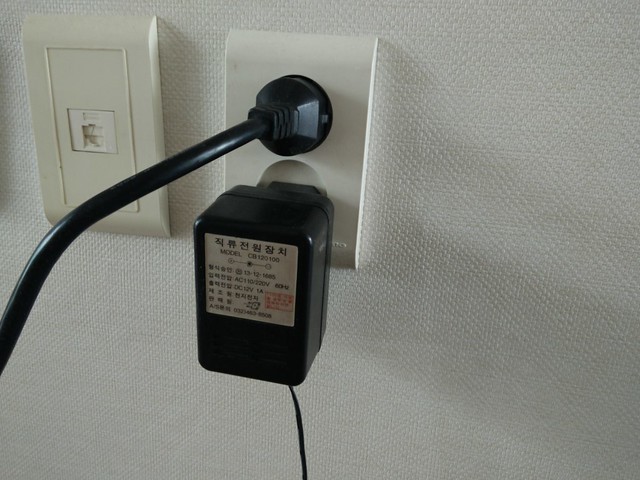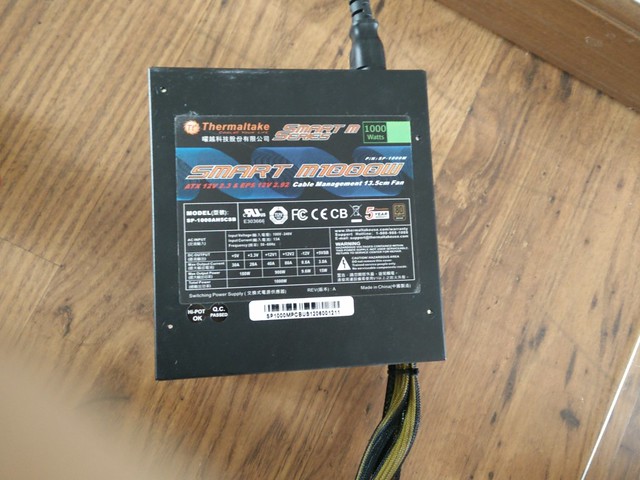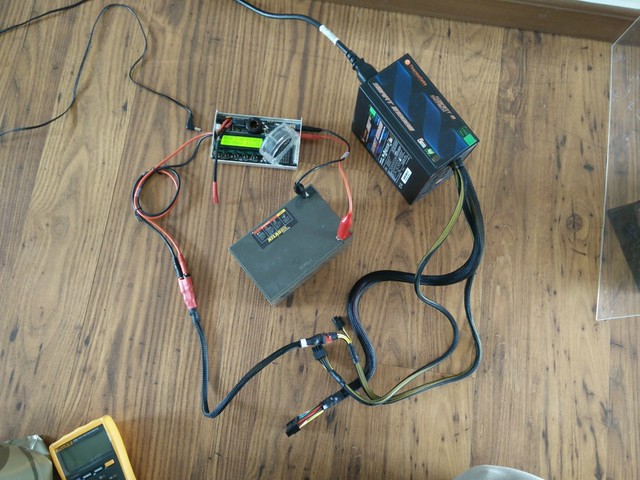I liked that one, nice touch. Can’t make omelette without breaking a few eggs amirite?
Hi Ryan,
How is my good friend? Very nice to see you here again in BLF with a very interesting project that will immensely help all of us!
I can send you two hosts and some new LG, Samsung and Panasonic cells (also 1 8-yr. old Panny laptop cell, still 80% capacity) for testing too, but have to check the post office regarding regulations, for two weeks ago I sent my SC600 back to China for repair but was distinctly asked and checked if there is a battery inside.
Hey tatasal! It’s been great, thanks. ![]()
I like the idea of members sending in hosts and batteries for testing, that’d be great. I’ll be blowing up flashlights all summer.
I guess li-ion shipping regulations have become even more stringent, although I’m not sure how online vendors (BG, GB, FT) do it. Hopefully it won’t be of much hassle.
Sorry folks, I don’t think I can fit in the experiment today, but I’m sure I have time tomorrow. Will keep you guys posted. ![]()
thanks for testing this for us, and take care!
+1 million on the “take care”!
We don’t want you poisoning/puncturing yourself for the cause.
Uh oh, bad news folks.
I just tried powering up the charger with the car battery, and it’s dead. The electrolytes seem to have dried up, and the internal resistance is off the charts. When I tried to charge it with 0.5A CC, the voltage shot up to 20V+ and kept rising. ![]()
Now I’m not sure what I’ll power the charger with since there aren’t any outlets on the roof. Hmm…
Thanks totilde and ruffles, I’ll definitely keep in mind that this isn’t the safest experiment and I won’t be anywhere near the setup while the battery’s charging.
Edit: There’s an auto repair shop nearby, I think I’ll ask if they lend me a dead car battery, or even trade a dead one for mine.
how big is the switch opening and how much is occupied by the switch?
with my nail test on a junk cell it rocketed quite a ways before it blew out the + plate and unraveled its guts.
the one i got on video flew about 200’ but didnt explode.
thats a lot of gas volume produced in an instant.
tube mods with multiple vent holes have still blown of the endcap during a cell runaway.
subscribed……
I would try wrapping nichrome wire around the flashlight to heat it and still be able to record it. Anodizing is non conductive but you could also add a layer of kapton tape. Li-cobalt needs 130–150°C, nickel-manganese-cobalt (NMC) 170–180°C.
Want to make it vent fast….just charge 12vdc straight into it…once it saturates the excess volts will instantly make “too much heat” and too much heat = kablooey
Only way to truly know is to have umpteen different variables met…like CV but no CC shutoff so the battery just keeps sucking in power, 5vdc straight in to see if it overheats and vents, way to high voltage…yadda yadda
The resultant chunks of flashlight will probably be impressive…or underwhelming depending on how violent you can make the battery vent
and…if all else fails…a bit of tannerite will make it all worth while ![]()
When in doubt…C4

Should be fun, maybe keep a fire extinguisher nearby. If you epoxied the charging cord into the flashlight it would be more realistic to a sealed flashlight.
Quality cell shouldn’t blow up from this. According to Samsung datasheet (ICR 18650 26F):
Hmm I think I’ve hit a roadblock: The Pb battery is completely dead and I’ve yet to find a replacement. I went to the autoshop and they weren’t willing to lend me a dead battery even for a day.
Either of my parents weren’t too happy with lending their car batteries either, but I’m still searching for options. I’ve left all my other 18650s at school as well as some lipo cells. I looked around the rooftop again but couldn’t find any outlets. Any suggestions would be greatly appreciated.
Pregulla, that’s a very good point. High quality cells should withstand overcharging even up to 12V. My last experiment with a lipo cellphone battery went up to 30V at CC method before venting for comparison. (2:30)
I tried hooking up an ageing laptop pull directly to our 750cca jumper battery(12v light truck battery) we use at work, & couldn't get the damn thing to vent.
It was left hooked up for about two mins; maybe not long enough?
I let it sit for about 30 mins after that before I approached it, & it was still very hot.
@ Ryan, not sure how to get power to your rooftop; maybe hook up an alternator to the tire of a pushbike, & get fit while waiting for it to vent? 
Long extension cord maybe?
This is so cool  . I am glad that I saw this test because I have plans on building cell phone battery packs. But thing that is bothering me is: Could 3x cell phone cells in parallel withstand 4-5A discharge of nanjg driver?
. I am glad that I saw this test because I have plans on building cell phone battery packs. But thing that is bothering me is: Could 3x cell phone cells in parallel withstand 4-5A discharge of nanjg driver?
Camping stove? Barbecue?
Wow, I had some difficulty making some cells vent with a CV source too, very similar to your setup.
My apartment’s a few floors below the roof, so I don’t think I have an extension cord long enough.
The battery pack supplying power to the driver? I think it’ll be fine, given that the current is shared evenly between the three packs.
Mmm… imagine a sizzling C8. ![]()
I was just about to give up when I realized the SLA battery that I had was rated for 12V, not 6V.

The wimpy wall wart couldn’t supply enough current to charge the SLA battery.

So I jerry rigged a computer PSU to power iCharger. A little overkill.

Here’s the charging setup, I’ll start the experiment as soon as the SLA battery is fully charged.

negative good sir…that wall wart didn’t supply enough VOLTAGE to charge that 12vdc SLA
Each cell in a SLA supplies approx 2.25 to 2.27vdc at full charge resting (depending upon saturation and temperature…yadda yadda), so 2.25vdc x 6 = 13.5~vdc in order to charge those cells properly you need to supply OVER that resting saturation charge voltage or it can’t absorb the electrons (current flow)
As you can see from the site above…lead acid actually has a very similar charge pattern to that of Li Ion
| 2.30V to 2.35V/cell | 2.40V to 2.45V/cell | |
| Advantages | Maximum service life; battery stays cool; charge temperature can exceed 30°C (86°F). | Higher and more consistent capacity readings; less sulfation |
| Disadvantages | Slow charge time; capacity readings may be inconsistent and declining with each cycle. Sulfation may occur without equalizing charge | Subject to corrosion and gassing. Needs constant water. Not suitable for charging at high room temperatures, causing severe overcharge |
If you charge at 2.45~vdc per cell (for a faster charge) you can input 1A at 14.7vdc until the current flow into the battery is 10% of the rated battery capacity…
Float voltage for lead acid is 13.4vdc, you can leave it forever on a supply at 13.4vdc, it will prevent sulfation of the plates and prevent self discharge within the battery.
A 12vdc wall wart will actually undercharge the SLA…resulting in plate sulfation and shortening of the life of the battery
Not insulting your intelligence…putting out this info for anyone that doesn’t know about lead acid charging
I actually use one of those small DC/DC buck regulators with the volt/current display on it to charge lead acid batteries…works great (used a 19vdc laptop charger brick, then built my own 30vdc at about 2~A max powersupply (limit output amps to 1~A to not overheat the transformer)

I see what you mean by voltage, but I was using the wall wart to power the iCharger, which charges the SLA battery. I said “couldn’t supply enough current” because the iCharger would draw too much current and the wall wart’s voltage would fall to 10V, which would then trigger the low voltage protection of the iCharger.
If I were hooking up the wall wart directly to the SLA battery, you’d be completely correct. ![]()
The hobby charger has a dedicated Pb battery mode, and when I set it to 6S, it’s termination voltage is 14.4V.
That makes more sense…thanks
If the iCharger boosts the input voltage then that ATX powersupply will be sweet! Definitely have enough amps on the 12 volt rail to supply alot of stuff…I ran a 70watt Yaesu FT-2900R as a base station with one…worked good until it tried to broadcast at full power…then the voltage would sag and it would start clicking and popping…but it would push around 7~A on the 12vdc rail even on an anemic 250 watt powersupply…it could throw over 30A at 5V!!!
I mistook how you had wired it up in your original post….sorry
Still wasn’t trying to step on your toes bud